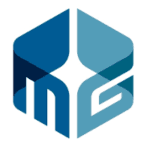 Recently, I wrote about an on-site event that I helped the Iowa Lean Consortium and Mary Greeley Medical Center (MGMC) organize… here is my first post about the morning of that event, if you missed it:
Recently, I wrote about an on-site event that I helped the Iowa Lean Consortium and Mary Greeley Medical Center (MGMC) organize… here is my first post about the morning of that event, if you missed it:
Celebrating & Sharing Continuous Improvement at Mary Greeley Medical Center
In the afternoon, we visited four different parts of the hospital, to hear from leaders and staff about what they're doing to create a culture of continuous improvement.
Photos in the post were shared by Ron Smith, of MGMC. Thanks to them!
Some notes and thoughts follow:
Cardiopulmonary Services
We heard from Tammy, the director, who said their culture change and improvement is “not a done product, not even close,” a good attitude for a Lean journey and continuous improvement.
They're focused heavily on “the why” and a sense of purpose, as she said they are “improving the organization of critical care equipment, making sure it's ready for them to improve patient safety.” Tammy asked the staff for their “why” statements.
It's a good example of how 5S isn't just about looking neat and tidy – it's about being effective and helping reach important goals, like safety. 5S and the organization of pumps and equipment also helped improve staff safety, by reducing trips and falls.
Tammy's “role was to be a resource and remove barriers – she tried to stay out of it,” which is a good trait for leaders. The leader helps create the environment where improvement can happen. She doesn't need to have all of the ideas or to do it all herself. She “tried to have a comprehensive approach to design the core, not just random improvements.” Leaders can certainly set direction and make sure people aren't suboptimizing or missing greater potential in their improvement.
They took doors off of cabinets. While Tammy was gone, the team decided to rip out a cabinet (which she was happy about… the decision and not feeling like they needed permission). They're using clear bins to organize supplies and they wonder, “How did we even function before?”
They worked with the supply chain group to use kanban to improve the availability of materials.
Tammy was proud that they had “applied Kaizen to the kanban system” as they added a clip to side of a bin to show it's on order, using color coding to show if there is a backup supply or another storage location (green) or not (red).
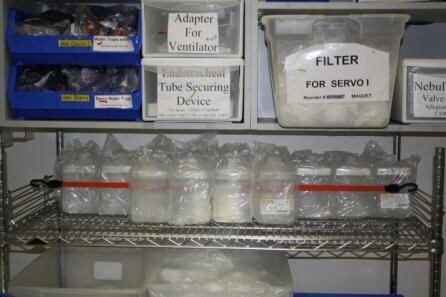
So they're very patient-focused and doing good work that benefits everybody.
They're also fixing things that bug them. Case in point was a conference room table with legs that people were always hitting. They tried a number of countermeasures and eventually used cut “pool noodles” in a way that they're very happy with:
This is the second kaizen example I've shared recently involving pool noodles! See this recent story from Ontario:
Toronto Cyclist Error Proofs With a “Pool Noodle” to Improve His Safety
Back to MGMC:
Surgical Inpatient Unit
They recently opened up new patient care space, so Amanda showed us around their new surgical unit. She explained how they used full-sized foam mockups of the rooms to better understand the needs of patients and staff and to make adjustments before it was built.
One example was nurses pointing out that adding a swing-arm writing surface and table would be very helpful… and it turned out to be! The nurses can work without their back to the patient as much, which everybody appreciates.
They also improved a communication board that was hanging in each room.
Before, the language was unclear (and this should be determined in the eyes of the patients and family members). The sign said:
“Pain Med is due at __________”
Patients thought that meant the meds would automatically be delivered at that time. People complained when they didn't get their meds.
To their credit, MGMC talked with patients and realized the sign was unclear. Patients didn't realize that they had to request pain meds, if needed, after that time.
It was changed to read, as a test:
“Next pain medication can be requested at _________”
They did a small test of change in one room and, based on positive feedback from the pilot room, will be rolling that change out to other rooms.
In another proposed improvement, nurses were walking around too much to find and retrieve “SCD pumps” for patient use. The nurses' original idea was “get one for each room.” There some initial pushback, as management was leery of the cost. But, they didn't stop investigating. It turns out the pumps are FREE from the vendor because they get charged for the cuffs and supplies used with the pumps.
It was win/win/win to put an SCD pump in each room. It didn't increase cost, it saves time, and provides faster care for patients. Great!
Oncology
During a previous visit, my “fresh eyes” noticed that different signs pointing to the unit said two different things:
“Infusion Center”
or
“Outpatient Oncology”
That had never occurred to staff, but to their credit, they realized this was confusing to visitors, so all of the signs now consistently refer to the Infusion Center.
One staff idea that required discussion was a staff request for an ice machine.
In our Healthcare Kaizen model, the steps for an improvement are:
- Find
- Discuss
- Implement (test)
- Document
- Share
Managers don't just say yes or no. They work to understand the problem together. The goal is solving problems and making things better.
After investigating an ice machine, there were concerns that it was too hard to run a water line to the location… too much cost, too much hassle.
Leaders asked, “What problem are you trying to solve?” Patients needed cold water.
It might not be a perfect solution, but they decided to install a small “dorm room fridge” that could keep water cold, which just requires electricity. Now, it has the downside of plastic bottle waste, but they can recycle.
Lab & Phlebotomy
There were a number of nice improvements that demonstrated the staff engagement, customer focus, and culture change.
In the specimen collection room, “Everything we need at our fingertips” with the improvements they have made. Staff created standardized phlebotomy carts that make sure everybody has what they need to do their job well.
They also added a bracket for the label printer. Again, making work easier.
Another kaizen improvement was changing out the cart wheels to “roller blade” wheels, which makes their work much easier:
I don't have a photo, but the lab had some complaints about noise from the centrifuges. So, they installed some sound-absorbing foam (like this) on the cubicle walls behind the centrifuges, and it made a big difference.
It's wonderful to see this culture of continuous improvement really spreading and taking root after I first helped them about two years ago with a “KaiNexus Kickoff” workshop (a variation of my “Kaizen Kickoff” approach).
Ron Smith and the executives at MGMC deserve a lot of credit for spreading what we at KaiNexus call the three pillars:
- Methodology (I showed them how to lead Kaizen)
- Leadership (from the CEO on down, they are providing that)
- Technology (their use of KaiNexus)
It's a great partnership, I love seeing their progress, and I'm really glad they're will to share it!
What do you think? Please scroll down (or click) to post a comment. Or please share the post with your thoughts on LinkedIn – and follow me or connect with me there.
Did you like this post? Make sure you don't miss a post or podcast — Subscribe to get notified about posts via email daily or weekly.
Check out my latest book, The Mistakes That Make Us: Cultivating a Culture of Learning and Innovation:


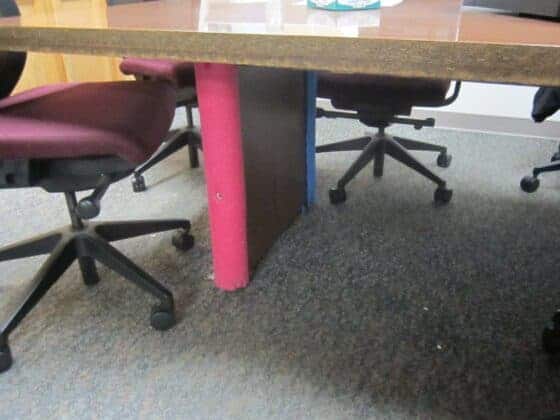
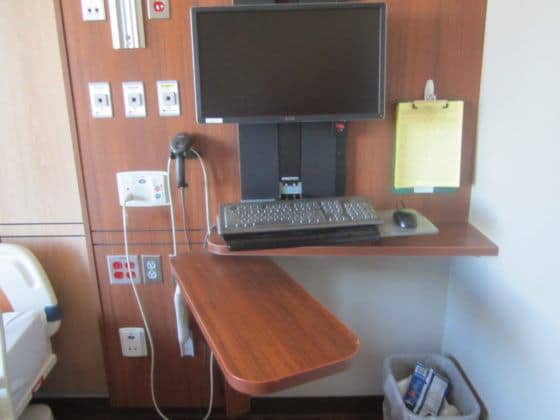
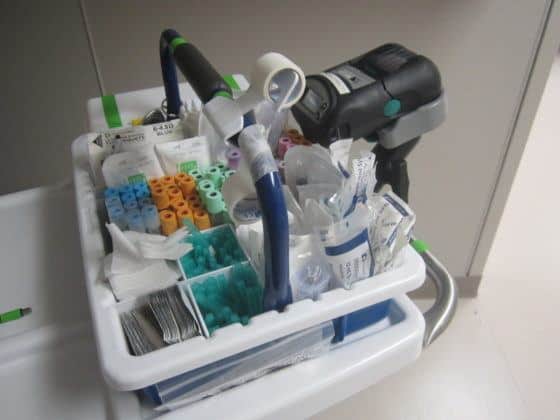
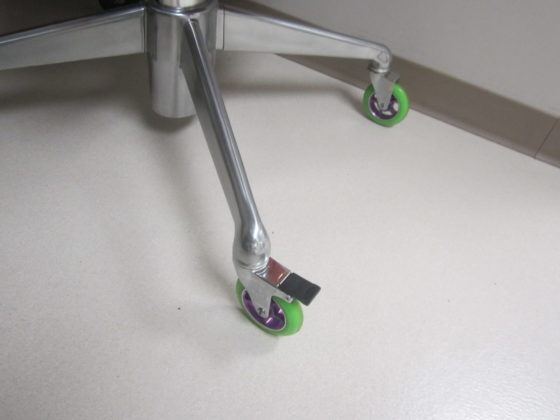







Can you tell me why I often see the trash bins on the floor in hospital as I see in the picture above (Surgical Inpatient Unit)? In recent times I did visit several hospitals and everywhere the bins are on the floor. You better can hang them on the wall or place a shelf. So the people who clean the floor they direct can clean the place, so there is no bacterial breeding ground.
Great question, Hessel. I can ask the MGMC people.
It is wonderful when organizations have created the right climate to encourage continual improvement by everyone. Reaching that point makes management much easier. The process of getting to that point is often quite difficult though :-(